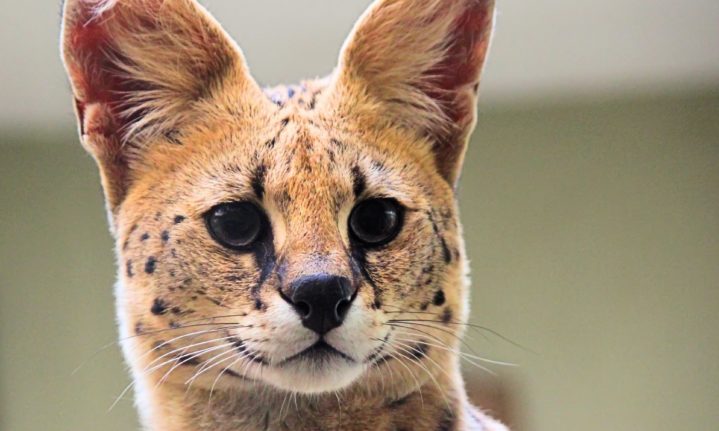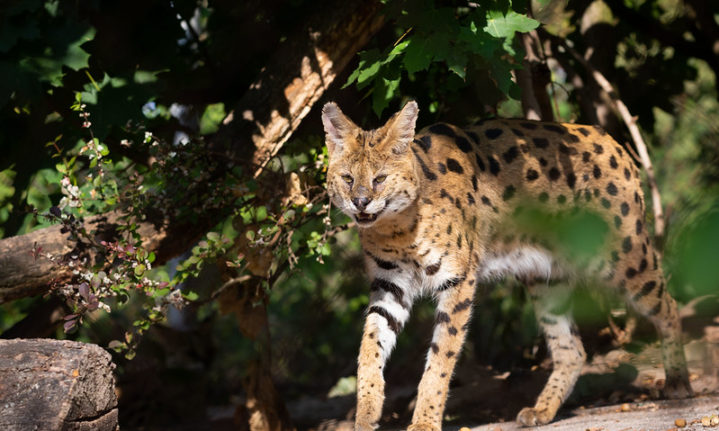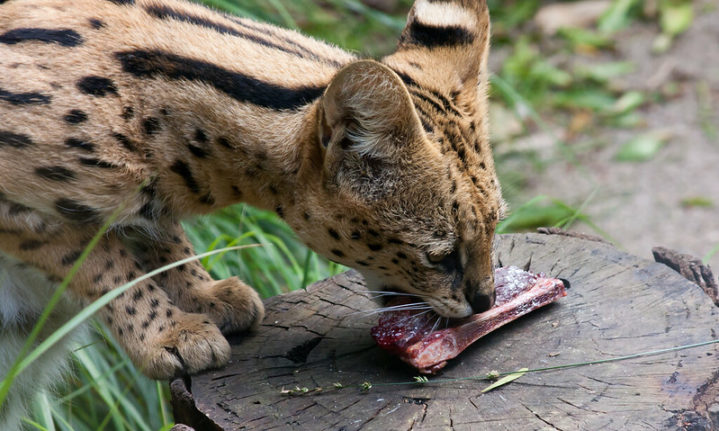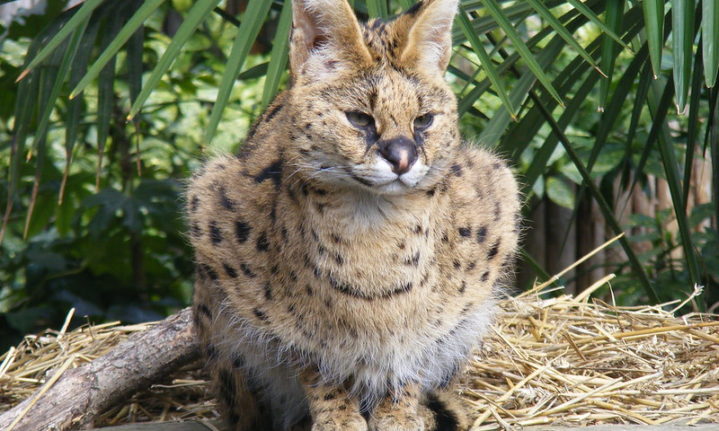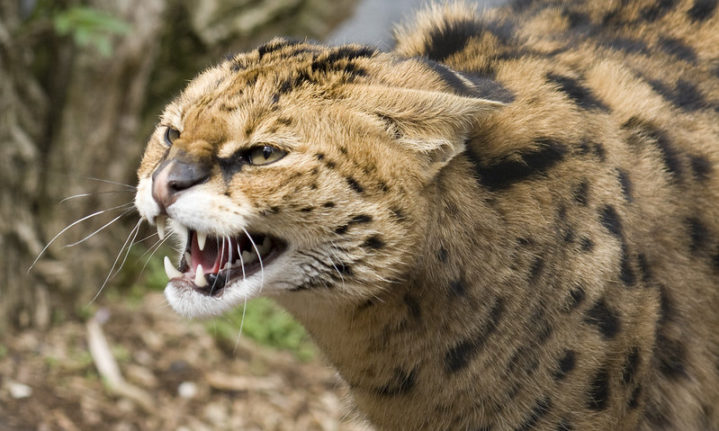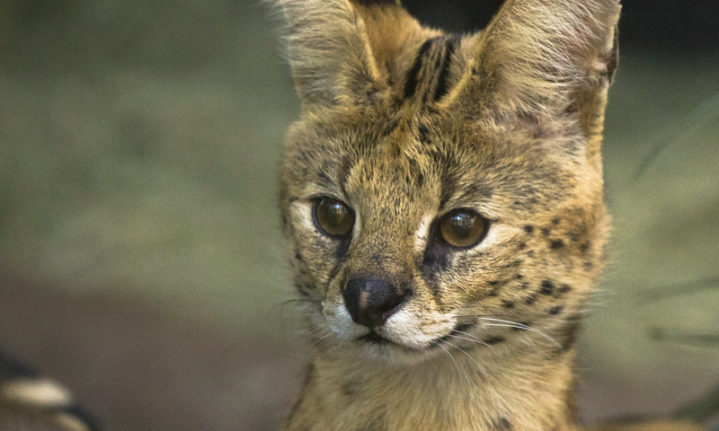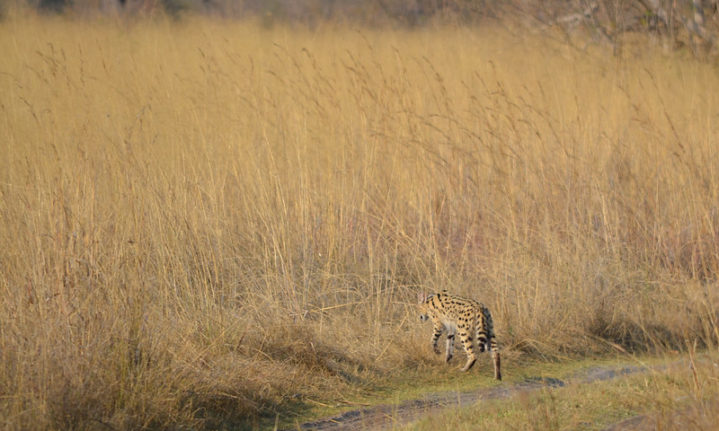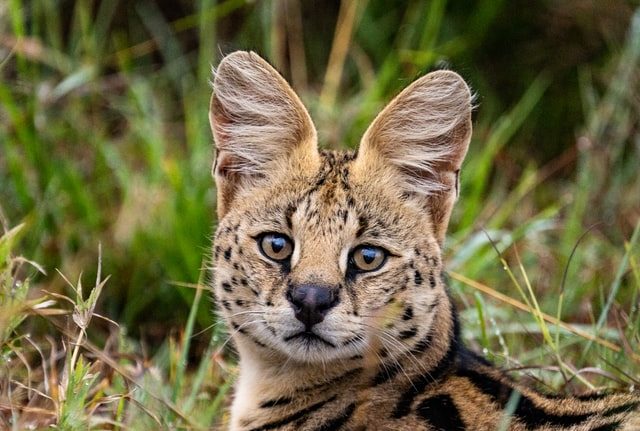This cheetah lookalike is Africa’s tallest small wild cat, equipped with the ability to jump up to three metres into the air to catch a bird in flight. Their saucer-sized ears also provide them with an acute sense of hearing, according to the African Wildlife Foundation. Want to know more? Here’s everything you need to know about Africa’s beloved serval.
Appearance
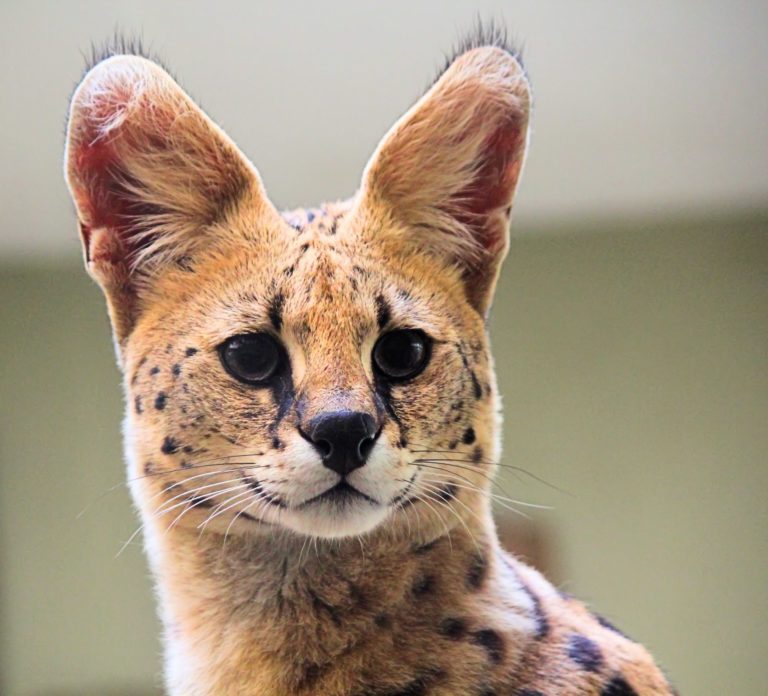
Credit: Dusan Veverkolog/Unsplash
Servals are small to medium-sized, measuring 54 to 66cm at their shoulders. Like the bat-eared fox, they have a distinct feature: large, distinctive ears. Their fur – a tawny colour – has black stripes transition into spots from the top of their head down to their back. Their black-tipped tails are short, stopping about halfway down their hind legs.
Female servals can weigh up to 12kg, whereas male servals can weigh as much as 18kg, according to the South African National Biodiversity Institute.
Diet
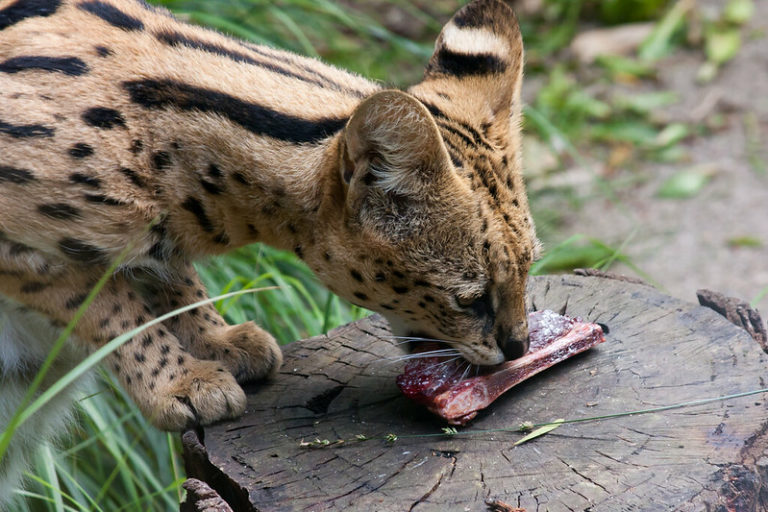
Serval having a snack…Credit: skepticalview/Flickr Commons
Servals are carnivorous creatures with a wide variety of prey. They feast on rodents, birds, reptiles, frogs and even insects. They are excellent hunters, with an almost double success rate in hunting than other members of the wild cat kingdom.
Habitat
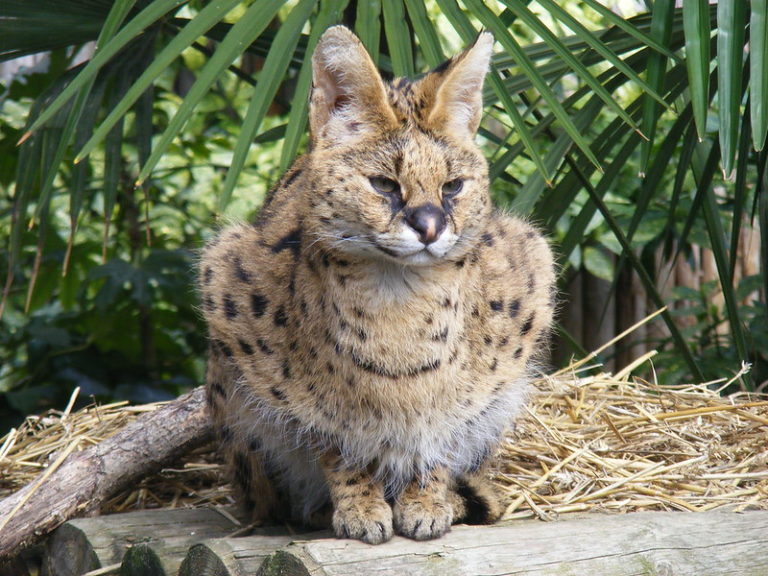
Credit: Marie Hale/Flickr Commons
Servals prefer savannas with plenty of water sources. Whilst they can be found in high-altitude moorlands and bamboo thickets, servals prefer tall grass, shrubs and dry reed beds near streams.
Breeding
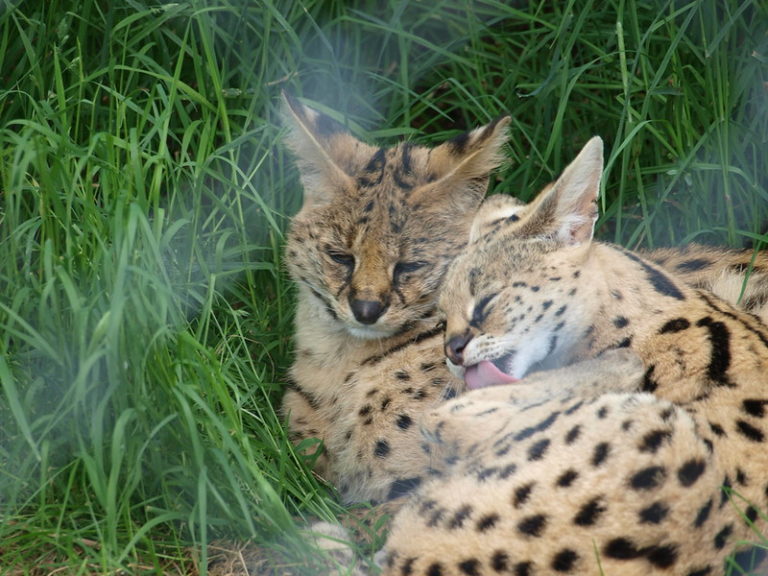
Credit: Nigel Swales/Flickr Commons
Though little information is available on the sexual behaviour of servals, they are considered polygamous creatures. Breeding can occur at any stage during the year, and the gestational period can last up to 75 days. A female serval will give birth to two or four kittens, that she hides in dense vegetation.
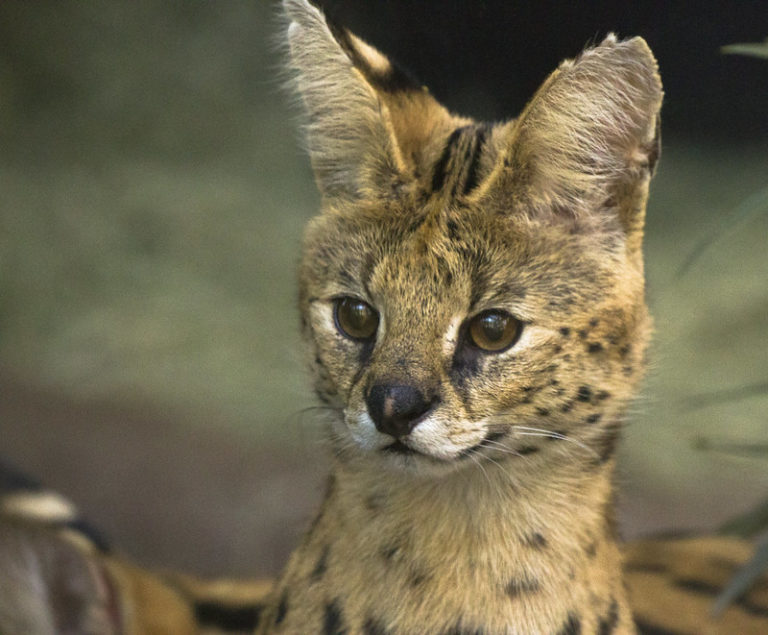
A serval kitten. Credit: Nathan Rupert/Flickr Commons
Female servals care for their kittens alone. They are weaned within five months, though they can stay with their mother for up to a year. Young males however are driven away as soon as they can hunt successfully. Kittens reach sexual maturity between 18 to 24 months.
Behaviour
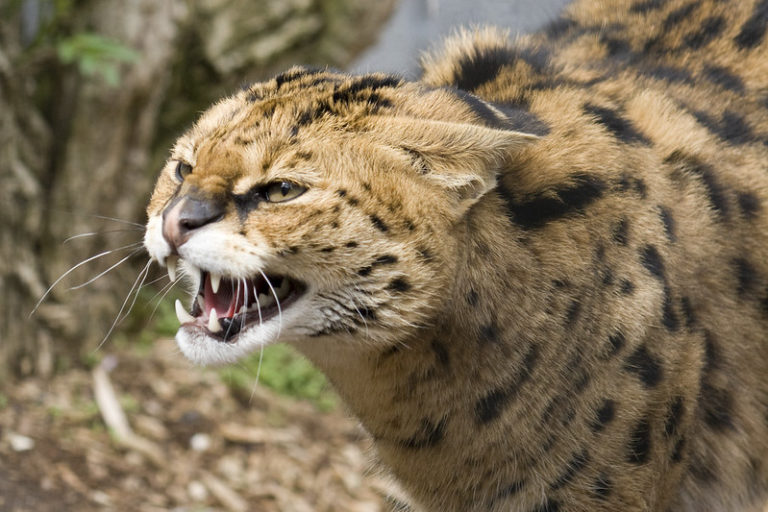
Credit: Rob/Flickr Commons
Like many other felines, servals are primarily nocturnal hunters, though they are more diurnal than most cats. They are able to hiss, purr and meow.
Distribution
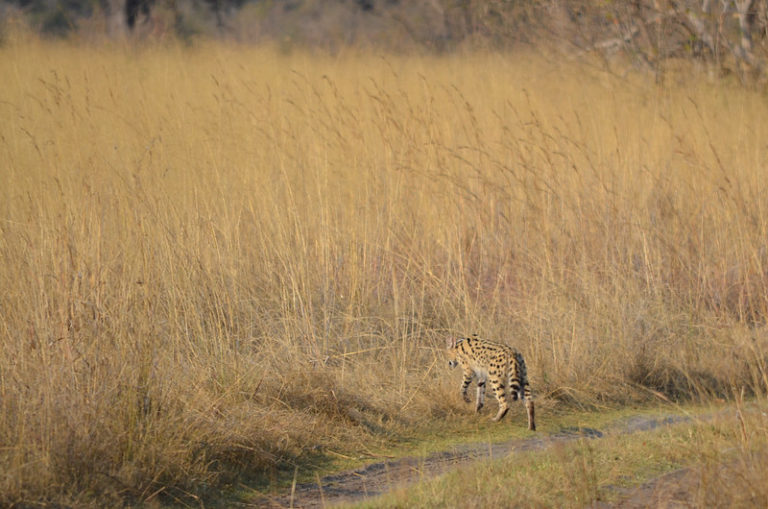
Credit: Benjamin Hollis/Flickr Commons
Servals can be found throughout the African continent, with the exception of Central Equatorial Africa and the Sahara. They can be found in South Africa, mostly in the Northern Province, Mpumalanga and KwaZulu-Natal.
Conservation Status
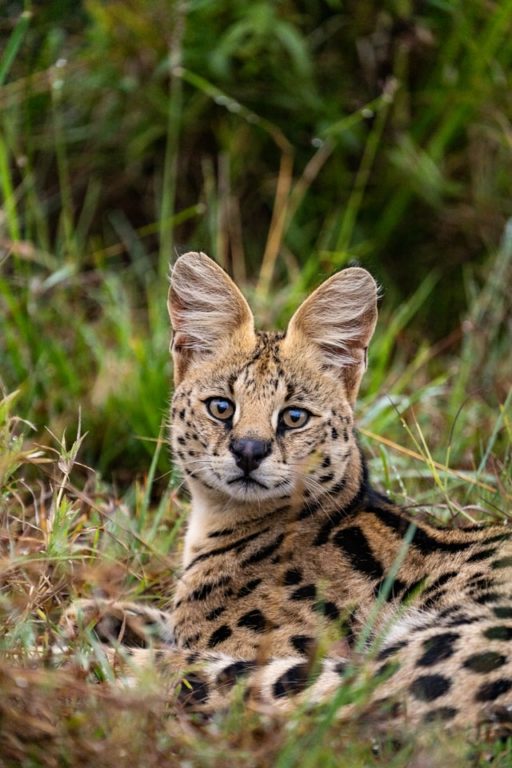
Credit: Ahmed Galal/Unsplash
Servals are considered to be rare. On the International Union for Conservation of Nature Red List of Threatened Species they are classified as Near Threatened.
ALSO READ
Everything you need to know about South Africa’s most common hare









